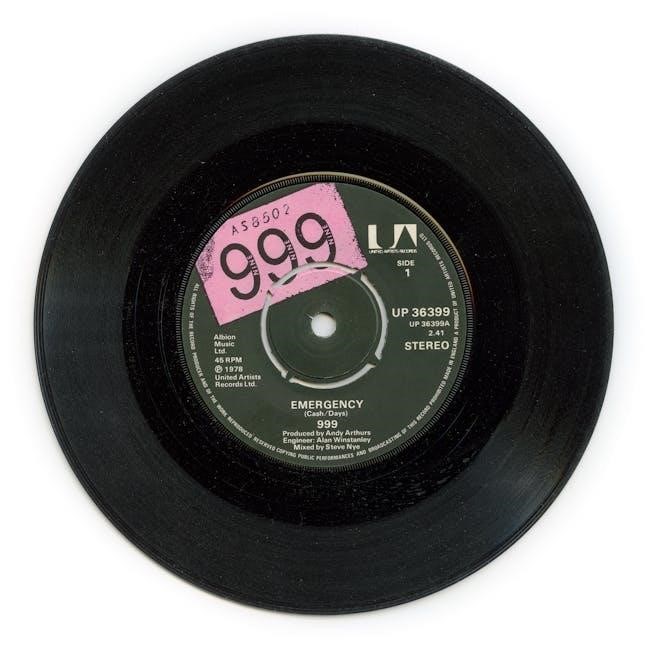Cortisol is a key steroid hormone linked to stress response, with salivary testing offering a non-invasive method to measure free cortisol levels, reflecting adrenal function and diurnal rhythms accurately.
What is Cortisol and Its Importance in Saliva Testing
Cortisol is a steroid hormone produced by the adrenal glands, playing a central role in the body’s response to stress, regulating metabolism, and maintaining immune function. Its levels follow a natural diurnal rhythm, peaking in the morning and decreasing at night. Saliva testing for cortisol is non-invasive and measures free cortisol levels, providing insights into adrenal function and stress response. This method is particularly useful for diagnosing conditions like Cushing’s disease and monitoring hormonal imbalances. Accurate saliva cortisol levels help healthcare professionals assess stress and hormonal health effectively.
Why Saliva Collection is Preferred for Cortisol Testing
Saliva collection is preferred for cortisol testing due to its non-invasive and stress-free nature, reducing the risk of elevated cortisol levels caused by blood draws. It provides a reliable measure of free cortisol, which reflects the biologically active form of the hormone. Saliva samples are easy to collect, eliminating the need for needles or specialized medical training. This method is particularly advantageous for repeated or multiple collections, such as assessing diurnal rhythms. Additionally, saliva testing is cost-effective and offers a convenient alternative to blood testing, making it ideal for both clinical and research settings.
Preparation for Cortisol Saliva Collection
Preparation involves avoiding food, smoking, and alcohol for 30-60 minutes before collection, rinsing the mouth with water, and relaxing to ensure accurate cortisol level measurement.
Pre-Collection Dietary Restrictions
To ensure accurate cortisol results, avoid eating, smoking, or consuming caffeine and alcohol for 30-60 minutes before saliva collection. Refrain from brushing teeth, flossing, or using mouthwash, as these can interfere with saliva quality. Avoid consuming acidic foods or beverages, such as citrus fruits or carbonated drinks, which may alter saliva composition. Water is permissible but should not be consumed during the 10-15 minutes prior to collection. Adhering to these dietary restrictions helps prevent sample contamination and ensures reliable cortisol level measurements. Proper preparation is essential for obtaining precise and meaningful test outcomes.
Avoiding Alcohol and Caffeine Before Collection
Alcohol and caffeine consumption can significantly impact cortisol levels, leading to inaccurate test results. It is crucial to avoid alcohol for at least 12 hours before saliva collection. Caffeine intake should be ceased for 1-2 hours prior to the procedure. These substances can elevate cortisol levels and disrupt the body’s natural diurnal rhythm, potentially skewing the results. Ensuring abstinence from these substances ensures that the collected saliva reflects the body’s baseline cortisol levels, providing a more accurate assessment of adrenal function and stress response. Compliance with this guideline is essential for reliable test outcomes.
Oral Hygiene Instructions Before Saliva Collection
Proper oral hygiene is essential before saliva collection to ensure accurate cortisol test results. Avoid brushing, flossing, or any activity that may cause bleeding gums for at least 60 minutes prior to collection. Rinsing the mouth with water 10 minutes before collecting saliva is recommended to remove loose food particles. Additionally, refrain from using mouthwash, chewing gum, or applying oral creams or lotions, as these can contaminate the sample. Maintaining clean oral conditions helps prevent interference with cortisol levels, ensuring reliable and precise test outcomes.

The Cortisol Saliva Collection Process
Saliva collection involves chewing on a swab or directly depositing saliva into a tube, typically at midnight, following a standard method to assess cortisol levels accurately.
When to Collect Saliva Samples
Saliva samples for cortisol testing are typically collected at specific times to capture diurnal rhythm patterns. The optimal time for collection is between 11:00 p.m. and midnight, as cortisol levels peak in the early morning hours. For accurate results, collect samples at the same time each day, usually upon waking and before any food or drink. Avoid collecting samples immediately after waking or when stressed, as this can elevate cortisol levels. For clinical assessments, multiple samples may be required, such as morning, noon, and night, to assess circadian variations. Consistency in timing is crucial for reliable test outcomes.

Using Saliva Collection Devices
Saliva collection devices, such as cotton swabs or specialized tubes like Salivettes, are designed to simplify the process. To use, rinse your mouth with water 10 minutes prior to collection to ensure sample purity. Open the device, place the swab under your tongue, and chew gently to stimulate saliva flow. Collect the required amount without touching the swab to your teeth or gums to avoid contamination. Once sufficient saliva is gathered, secure the swab in the provided tube and seal it tightly. Follow the manufacturer’s instructions to ensure accurate results and proper handling of the sample.
Handling and Storing the Saliva Sample
After collection, handle the saliva sample carefully to avoid contamination. Place the sealed device in a protective container, ensuring it is kept upright to prevent leakage. Store the sample at room temperature if shipping the same day or refrigerate at 2-8°C for up to 24 hours. Avoid freezing unless specified. Protect the sample from direct sunlight and heat sources. Use a sealed, labeled container for transport to maintain integrity. Ensure the sample is shipped to the laboratory within 24 hours of collection to guarantee accurate test results. Always follow the provided storage and shipping instructions to maintain sample viability.

Post-Collection Instructions
Label the saliva sample clearly with your name, date, and time of collection. Store it in a sealed container and refrigerate if not shipping immediately. Follow shipping instructions precisely to ensure timely laboratory analysis and accurate results.
Labeling and Packaging the Sample
Properly label the saliva sample with your name, date, and time of collection. Use the provided container and ensure it is tightly sealed to prevent leakage. Place the sample in a protective packaging material, such as a biohazard bag, to safeguard against contamination. Include any required documentation, like test requisition forms, in the package. If shipping, follow the laboratory’s guidelines for packaging and handling biological specimens. Store the sample in a refrigerated environment if shipping is delayed. Ensure all packaging meets biohazard transport regulations to maintain sample integrity and safety during transit.
Shipping the Sample to the Laboratory
Ship the packaged saliva sample promptly to the laboratory using a traceable shipping method. Include a cold pack if refrigeration is required, as specified in the instructions. Ensure the sample is sent via overnight delivery to prevent degradation. Verify the laboratory’s address and shipping requirements beforehand. Complete any necessary shipping documents, such as customs forms, accurately. Maintain communication with the laboratory regarding the shipment’s status. Avoid shipping on weekends or holidays to ensure timely receipt. Retain a copy of the shipping label for your records. Follow all local and national regulations for transporting biological samples to guarantee compliance and sample integrity.
Factors Affecting Cortisol Levels in Saliva
Cortisol levels in saliva are influenced by daily rhythms, stress, and activity levels. Diurnal variations, external stimuli, and individual differences in health and age also impact results.
Daily Rhythms and Timing of Collection
Cortisol levels in saliva follow a natural circadian rhythm, peaking in the morning shortly after waking and decreasing to lower levels at night. Accurate test results depend on timing, as variations in collection times can lead to misleading data. Midnight sampling is often recommended to assess basal cortisol levels, particularly for diagnosing conditions like Cushing’s syndrome. Consistency in collection timing across samples is crucial to capture the body’s natural hormonal fluctuations and ensure reliable results for clinical interpretation.
Stress and Activity Levels Before Collection
Stress and physical activity significantly influence cortisol levels, potentially skewing test results. Elevated stress before collection can artificially increase cortisol, while high activity levels may also impact readings. To ensure accurate results, individuals should avoid strenuous exercise and stressful situations for at least one hour before saliva collection. Relaxation is recommended to stabilize cortisol levels. Additionally, eating, drinking, or brushing teeth should be avoided for 30 minutes prior to collection to prevent sample contamination. Adhering to these guidelines helps maintain the integrity of the saliva sample and ensures reliable test outcomes for proper clinical assessment.

Common Mistakes to Avoid During Collection
Common mistakes include eating before collection, not following instructions, and improper handling of samples, which can contaminate results and lead to inaccurate cortisol readings.
Contamination of the Sample
Contamination is a major issue in cortisol saliva collection, as it can lead to inaccurate results. Common contaminants include food particles, alcohol, caffeine, and oral hygiene products. To prevent contamination, avoid eating, drinking, or brushing teeth for at least 30 minutes before collection. Refrain from using lotions, creams, or mouthwashes, as these can interfere with cortisol levels. Ensure the collection device is handled properly, and avoid touching the swab or tube to prevent bacterial contamination. Following these guidelines ensures the integrity of the sample, leading to reliable test outcomes and accurate assessment of cortisol levels.
Non-Compliance with Collection Timing
Non-compliance with collection timing can significantly impact cortisol test accuracy, as cortisol levels follow a natural diurnal rhythm, peaking in the morning and decreasing at night. Collecting samples outside the specified times may result in misleading data. Adherence to the recommended schedule is crucial to capture the correct cortisol profile. Ignoring timing instructions can lead to inaccurate interpretations of adrenal function or stress responses. Therefore, patients must strictly follow the collection schedule provided by healthcare professionals to ensure reliable and valid test results.

Interpreting Cortisol Saliva Test Results
Understanding cortisol levels and their diurnal patterns is essential for accurate assessment. Consult healthcare professionals to interpret results correctly and determine if further evaluation is needed.
Understanding Cortisol Levels and Diurnal Patterns
Cortisol levels in saliva reflect the body’s natural diurnal rhythm, typically peaking in the morning and dropping at night. Elevated or disrupted patterns may indicate stress, adrenal issues, or conditions like Cushing’s disease. Accurate interpretation requires considering the timing of sample collection, as cortisol levels follow a circadian cycle. Healthcare professionals analyze these patterns to assess hormonal balance and diagnose potential disorders. Understanding these fluctuations is crucial for identifying normal variations versus pathological changes, ensuring proper evaluation and treatment plans. Consistency in collection timing and adherence to testing protocols are vital for reliable results.

Consulting with Healthcare Professionals
Consulting with healthcare professionals is essential for interpreting cortisol saliva test results accurately. They analyze cortisol levels, considering diurnal patterns and individual health conditions, to diagnose disorders like Cushing’s disease or adrenal insufficiency. Professionals provide personalized insights, ensuring results are understood in the context of overall health. Discussing symptoms, medical history, and lifestyle factors with a doctor helps in making informed decisions. Following their guidance ensures proper test preparation and accurate interpretation, leading to effective treatment plans tailored to specific needs.
Adhering to cortisol saliva collection instructions ensures accurate results, helping assess adrenal function and stress response effectively, while maintaining proper sample handling and timing for reliable outcomes.
To ensure accurate cortisol saliva test results, adhere to specific guidelines: avoid eating, drinking, and brushing teeth for 30 minutes before collection. Refrain from alcohol and caffeine for at least 12 hours. Relax for 1 hour prior to sampling to prevent elevated cortisol levels. Collect saliva at specified times, typically between 11 PM and midnight. Use provided collection devices correctly and label samples clearly. Store and ship samples according to instructions to maintain integrity. Compliance with these steps is crucial for reliable diurnal rhythm assessment and accurate hormonal evaluation.